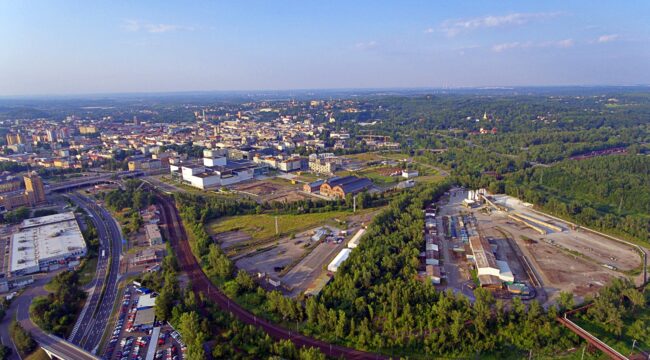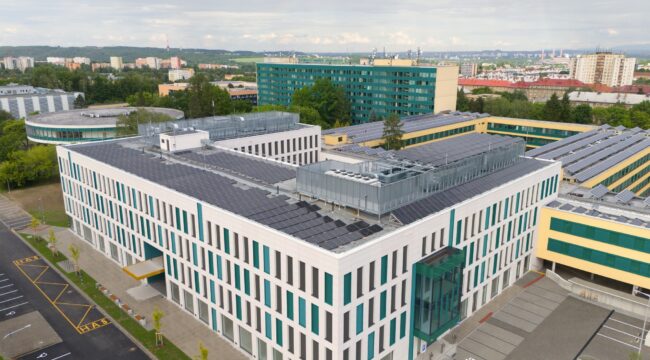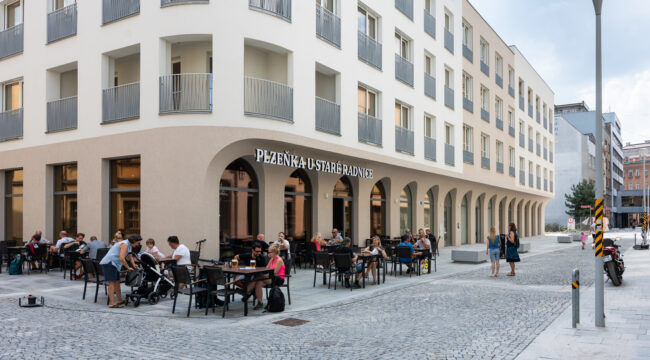Main themes of Ostrava’s new strategic plan
Ostrava has a new strategic plan. It has selected key topics to focus on and develop in the coming years until 2030. The plan’s priorities include quality housing and architecture, energy, and fulfilling the role of a metropolis, among others.
The city aims to achieve the set goals through the implementation of specific projects, with 49 flagship projects among them. These include the reconstruction of the Ostrava City Culture House and the extension of a concert hall, as well as the construction of the Ice Sports Centre. Simultaneously, the goal is to continue increasing the number of university students and stop the trend of population decline.
The Ostrava strategic plan is truly unique, and with the involvement of so many people, we set an example for other cities not only in the Czech Republic. It’s been a year-long thoroughgoing work, with broad public participation and involvement of Ostrava personalities, just as it was eight years ago. Some new themes have gradually emerged, which were not emphasized as much in the previous plan, and we want to focus on them to ensure that Ostrava fulfils its role as a modern metropolis in the future. These include energy and sustainable mobility, the demand for quality and affordable housing, and improving the city’s image.
The new plan builds upon a document from 2017, the implementation of which was evaluated as successful. Since 2016, 47 strategic projects have been successfully completed, including the revitalization of the former municipal slaughterhouse building and the construction of the City Campus on Černá Louka. “The new strategic plan shows that Ostrava has a vision and knows where it is heading. Over the next seven years, we would like to focus on supporting universities to help Ostrava gain the status of a university city. At the same time, we aim to attract companies with a higher added value, which would employ graduates and prevent them from leaving the region. Projects currently being implemented in cooperation with universities, such as LERCO, REFRESH, and others, should contribute to this. Transportation infrastructure is also important, with the construction of a high-speed railway being crucial for Ostrava’s development in the coming years,” said Jan Dohnal, Mayor of the city.
The preparation of the plan took place throughout 2023 and involved thousands of citizens as well as dozens of experts and city personalities. The first option was an online questionnaire in spring 2023, which was completed by more than 5,200 residents and visitors of the city. From April to June, residents could fill out online feeling maps. Over 1,650 people contributed almost 24,000 points = feeling from various locations in the city to the maps. The view of the residents was complemented by additional input obtained from approximately 5,600 people at events in Ostrava or through targeted discussions, such as with students.
Equally important was the involvement of experts. Twenty-one working groups were formed, focusing on various topics such as sustainable mobility, entrepreneurship, and universities. These were followed by a Vision workshop with selected city representatives, personalities, and experts, defining the city’s vision and the main topics of the new plan. Detailed structured interviews were conducted with around 80 personalities representing various fields and industries.
Similar to the previous plan, the success of the city’s development will be evaluated using so-called indicators. These have been updated, with 34 indicators now in place (24 of which are entirely new). Evaluation takes place annually, and a detailed overview can be found on the website https://fajnova.cz/. A key indicator remains the migration balance, with the goal of achieving positive values (meaning more people moving into Ostrava than leaving it). This was not achieved in the previous period, as the trend of population decline continues (the population increased only in the last year due to an influx of refugees from Ukraine). Stopping the decline in Ostrava’s population through migration remains a challenge for the next planning period. Another important indicator is the number of university students. The number of university students in Ostrava has been steadily increasing since 2019, and in 2020, it exceeded 20,000 for the first time since 2017. The goal of the city of Ostrava is to continue this trend in the long term, aiming for 23,000 students in Ostrava by 2030.
Strategic projects are one of the tools to achieve planned changes. In the new plan, 49 of them are designated as flagship projects (i.e., the most significant projects with an impact on the entire city). Among the flagship projects of the city are the reconstruction of the Ostrava City Culture House and the extension of a concert hall, as well as the construction, reconstruction, and aestheticization of the Main Railway Station and its surroundings, or the development of the area between Nová Karolina and the Lower Vítkovice area. New additions include projects such as the Ice Sports Centre.
The strategic plan under the brand fajnOVA was developed with a view to 2030. The plan, its annexes, and information about the process and planned projects are publicly available on the website https://fajnova.cz/ and on the social networks of fajnOVA. The plan was developed in collaboration with BeePartner.




